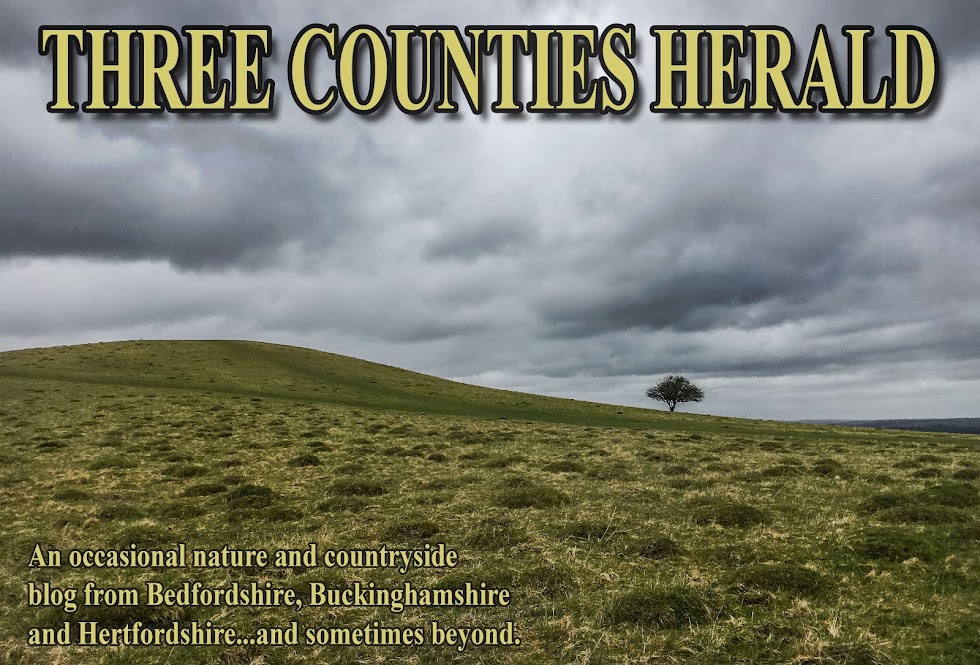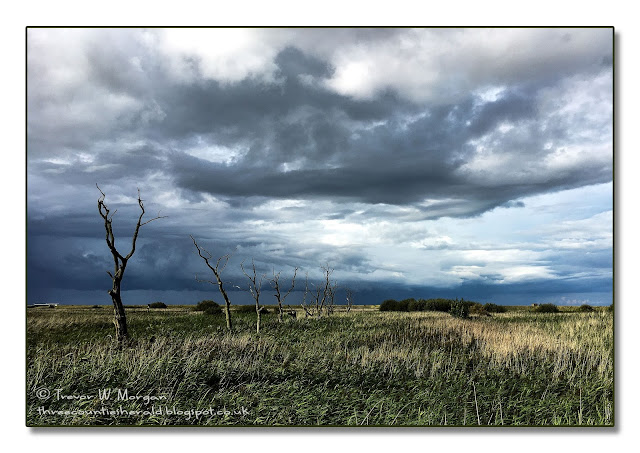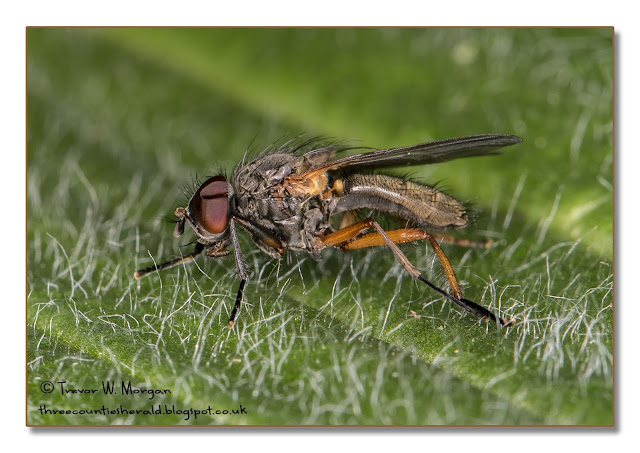Tuesday 24 April 2018
Geometry...nature's way
Rhombus....an oblique-angled equilateral parrallelogram having four equal sides >
Rhombic....having the form of a Rhombus >
Rhombic Leatherbug (Syromastus rhombeus) 9-11mm body lenght. Local to coastal regions in southern England and also a few scattered inland sites.
Nature's geometry...
A few days ago, while out walking in one of my local nature reserves, I came across a large patch of (I think?) Common Chickweed (Stelllaria media), on closer inspection I found that it was covered in lots of these stunning Leatherbugs..a cue for a photo session!
What it's all about...
What do you call this shape then?
Who you looking at?
Way more interesting than the geometry lessons I had at school!
Sunday 11 February 2018
The early bird.....
....catches the worm. (or maybe she was just having a l-o-n-g lunch break?)
I spotted this pair of Stonechats a couple of days ago, the male didn't look too happy at missing out on a juicy meal!
My favourite little birds, always a pleasure to see.
Friday 26 January 2018
SPIDERS
Early last year, while out photographing insects, I saw, and photographed, a rather strikingly marked and colourful spider. On reviewing the photographs later, and not knowing anything about spiders, I decided to do some research. After a lot of Google(ing) and looking at Facebook spider groups, I became totally hooked on what to me is now a fascinating subject.
Needless to say many more photographs duly appeared....strange how that happens!
Some (just a few!!) I've posted below...I hope you find them interesting?
Common Candy-striped Spider - Enoplognatha ovata (f. lineata) ♀ Body length 4-6mm
This is the most common of the three colour forms. Of the other two, f.redimita has two longitudinal red bands on the abdomen and f. ovata has a broad central red band. Hence the name Candy-striped.
Crab Spider - Xysticus species (poss. X kochi) ♀ Body length 6-8mm
A squat crab like spider, they lie in wait on low vegetation ready to ambush their prey.
Daddy Long Legs Spider - Pholcus phalangioides Body length 7-10mm
A member of the Cellar Spiders genera. Found almost always indoors where it spins it's web and hangs upside down, usually, in ceiling corners.
Easter Fox Spider - Alopecosa barbipes ♂ Body length 8-12mm
Found in sparsely vegetated open heathland. The female digs a burrow in which she hides and protects her egg-sac.
Fleecy Jumper - Pseudeuophrys lanigera Body length 4-5mm
This small spider is associated with buildings and human habitation, often seen on outside walls and window sills.
First recorded in Britain in 1930.
Furrow Orb-weaver Spider - Larinioides cornutus ♂ Body length 5-8mm
Found in tall vegetation close to water where it spins it's large web. This is the normal white/black colour form there is also an orange/brown colour form.
Garden (cross) Spider - Araneus diadematus ♀ Body length 12-19mm
An abundant spider, it's webs can be found anywhere where the vegetation is strong enough to hold them. The female is much larger than the male and can usually be found sitting motionless in the center of her web.
Green Mesh Weaver - Green Leaf Spider - Nigma Walckenaeri ♂ Body length 3-4mm
This small spider is found only in central-eastern England where it favours Holly and other garden shrubs. The male has a brown carapace whereas the slightly bigger female is entirely green.
Labyrinth Spider - Agelena labyrinthica ♀ Body length 8-9mm
The female spins a labyrinth type web consisting of a maze of funnel like tubes low down in the vegetation. Her egg-sac is then placed deep inside the web.
Large House Spider - Tegenaria gigantes Body length 10-14mm
If you've got a large web indoors or in a shed or outbuildings this spider is probably the owner. Common throughout most of Europe, a spider that can cause a certain amount of uproar when spotted scurrying across the living room carpet!
This one I spotted sitting on my wife's slippers, luckily she was out at the time, did I tell her?....No, of course I didn't!!
Missing Sector Orb Web Spider - Zygiella x-notata ♀ Body length 6-7mm
This spider is always associated with human habitation were it spins it's web in the outside corners of door and window frames or under rain gutters etc. There is always an empty sector in the web with a single thread of silk running through the middle, this is a 'signal line' - the female sits, hidden in her retreat, at the other end of the line waiting for the vibrations to tell her that prey (dinner) has landed in the web.
Have you ever been laying in bed fidgety and restless because you couldn't get all your arms and legs into a comfortable position? Perhaps this next spider can show you how to get those wayward limbs sorted!
Nursery Web Spider - Pisaura mirabilis Body length 10-15mm
The female constructs a large tent like web as a nursery in which to protect her newly hatched brood.
Pardosa species - poss. Pardosa prativaga Body length up to 6mm
Part of a large family of Wolf Spiders - there are fifteen British Pardosa species. Very common in the south of the country in a wide range of habitats.
Running Crab Spider - Philodromus dispar Body length up to 5mm
Part of another large genus with thirteen British species. Noted for their crab like appearance and erratic, often sideways, movements. P. dispar is common in the southern part of Britain and is found in a wide range of habitats.
Running Crab Spider - Philodromus collinus ♀ Body length up to 6mm
Only found in the south east of Britain usually on the leaves of evergreen trees such as Yew and pines but occasionally on broadleaved trees in mixed woodland.
Sac Spider - Clubiona sp. ♀ Body length up to 10mm
There are 21 Clubiona species in Britain, most are identical in appearance and microscopic dissection and examination of their genitalia is required to separate them.
Sand Bear-spider - Arctosa perita ♂ Body length 6-9mm
This is the culprit that started me on my spider journey - and you can see why!
A common spider in the UK where it prefers a sandy heathland type of habitat in which to excavate it's burrow.
Stone Spider/Ground Spider - poss. Drassodes capidosus ♀ Body length 9-18mm
As the name suggest these spiders can be found under stones in deep vegetation where they feed on ground living insects. Again genitalia examination is required to separate the three British Drassodes species.
Swamp Crab-spider - Xysticus ulmi Body length 3-8mm
Found in low damp (marshy) habitats in south east England.
ID unknown?...
I've included this because I really like the photo..just look at those fangs!
This is the only photograph that I took of this individual so, sadly, not much hope of an id.
Wolf Spider - Pardosa amentata ♂ ♀ Body length 5-8mm
Found in a large variety of habitats this is probably the commonest species of Pardosa to see.
I watched this pair for about twenty minutes as they engaged in a 'mating dance', the female (on the right) would sit motionless as the male slowly crept towards her intermittently vibrating his body or slowly waving his pedipalps around, semaphore fashion. When he got too close she would quickly strike out towards him making him retreat back to a 'safe' distance and the ritual would start over again. Unfortunately I never got to see if he 'got lucky'...I think I moved too quickly while taking photos and they both suddenly vanished under the vegetation...or maybe, they just got shy?
White Crab Spider - Misumena vatia Body length 9-11mm
An unmistakable light coloured spider typically found on flower heads along woodland rides and hedgerows. The female has the ability to change colour, through shades of white to green, to match the colour of the flower head that she's resting on. The male is much smaller and has brown legs.
Common Zebra Spider - Salticus scenicus ♀ Body length 5-7mm
My favourite little spider! Can often be seen sitting in the sunshine on walls, fences and window sills waiting to jump onto any passing prey.
If you've got to the end of this well done, I hope I haven't given you too much of a spider overload?
It's a fascinating subject on which I've learnt a lot over the last few months and hopefully I'll be able to learn some more in the coming months...and maybe find something a bit rarer?
Wednesday 20 December 2017
Wednesday 20 September 2017
PHONESCAPES
I spent last week on holiday in North Norfolk, normally alongside the DSLR I carry a small compact camera for taking general photos, views etc. This time I decided to lighten the load a little and use the camera on my phone.
Norfolk is the place to go for big skies and during our holiday we were lucky(!?!) to get more than a few dramatic ones!...just the job to test out the camera phone and, after a little tittivating in Photoshop, I'm really pleased with the results.
According to the metadata recorded by my phone I took this next image at 9.68 meters BELOW sea level!
Here's a little teaser for you...can you spot the odd one out?
Wednesday 9 August 2017
Time Flies
TIME - It's been a while since my last posting, almost 6 months!, so I guess it's about TIME for another one?
This year, with regards to 'nature watching' I've had a bit of a change in direction..not so many birding outings but more outings focused on BUGS, or insects as the more serious like to say!
It's such a large and diverse subject and I've become totally hooked, and it's all TIME consuming...I can go out for a few hours 'bugging' and easily come home with 300+ images on the memory card, it then takes a few days (TIME) to sort through them and ID what I've happily snapped away at!
Subjects can range from the larger, more obvious, Damsel/Dragon Flies down to the small and barely noticeable leaf and plant hoppers. I find them all fascinating and beautiful.
Anyway, that's enough waffle...here's a few FLIES
Bluebottle Calliphora vicina Very familiar!
Thick-Headed Fly Sicus ferrugineus a parasitoid of bumblebees.
Broad Centurion Chloroyia formosa One of the many Soldierflies which are named after their brightly coloured 'uniforms', this is a green and bronze male, the female is green and blue.
A Picture-Winged Fly Tephritis neesii (about 4mm long) Belonging to a group of flies that wave their strikingly patterned wings around, semaphore style, to claim territory or attract a mate.
A Slender-footed Robberfly Leptarthrus brevirostris An insect eating fly, this one is enjoying a Mirid Bug for it's lunch.
Greenbottle Lucilia sericata Another familiar fly!
A Fever Fly Dilophus febrilis One of the St. Mark's Flies seen in early spring often flying in large swarms, and typically with their legs dangling. This is a female, the male has large bulbous eyes.
Lesser Housefly Fannia lustrator Another regular visitor to 'our world' (note the damaged eye)
These last two are from the family of Tachinidae flies (Parasitic Flies) the larvae of these flies are parasitoids of other insects especially the caterpillars of butterflies and moths.
Eriothrix rufomaculata
Tachina fera
Hopefully my next post won't be so long in coming but, you know what they say....TIME FLIES...[;o)
Subscribe to:
Posts (Atom)






















































